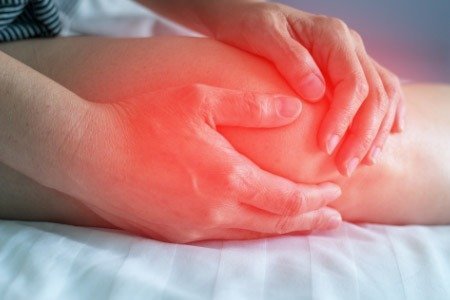Osgood-Schlatter Disease (Knee Pain)
Types, Causes, Symptoms, Risk Factors, Complications, Prevention, Diagnosis and Treatment
What would you like to know?
What are the symptoms of Osgood-Schlatter Disease?
The main symptoms indicating that a person is suffering from this disease are:
- Recurring pain in the knee or leg
- Tenderness in the knees
- Swelling right below the knee cap
- Warmth, limping, constant discomfort to the individual
What are the risk factors of Osgood-Schlatter Disease?
The main risk factors for this disease are:
- Age: It is most common in children between the ages of 10-14.
- Gender: Boys are more susceptible to developing this condition than girls.
- Sports: It is common in sports that involve running, jumping, etc.
- Flexibility: Greater flexibility of the quadriceps muscles can pull the kneecap’s tendons.

What are the complications of Osgood-Schlatter Disease?
Even though the complications of this disease are relatively uncommon, in cases that they do occur, they are observed as:
- Chronic pain
- Localized swelling
- Bony bumps
You may also interested in reading
- Limb Length Discrepancy
- Symptoms of Knee Tendon Bursitis
- Discoid Meniscus Treatment
- Deep Vein Thrombosis Treatment
Read More Information
References:
- Osgood-Schlatter Disease. Health Harvad Available at:https://www.health.harvard.edu/a_to_z/osgood-schlatter-disease-a-to-z Accessed on June 8, 2020.
- 2. Osgood-Schlatter Disease. Hopkins Medicine. Available at: https://www.hopkinsmedicine.org/health/conditions-and-diseases/osgoodschlatter-disease Accessed on June 8, 2020.
- Osgood-Schlatter Disease. Mayo Clinic. Available at:https://www.mayoclinic.org/diseases-conditions/osgood-schlatter-disease/symptoms-causes/syc-20354864 Accessed on June 8 2020.
- Osgood-Schlatter Disease. Kids Health.Available at: https://kidshealth.org/en/parents/osgood.html Accessed on June 8, 2020.
Disclaimer:
“The content of this publication has been developed by a third party content providerwho are clinicians and/or medical writers and/or experts. The information contained herein is for educational purpose only and we request you to please consult a Registered Medical Practitioner or Doctor before deciding the appropriate diagnosis and treatment plan.”



 Appointment
Appointment Second Opinion
Second Opinion WhatsApp
WhatsApp Call
Call More
More





